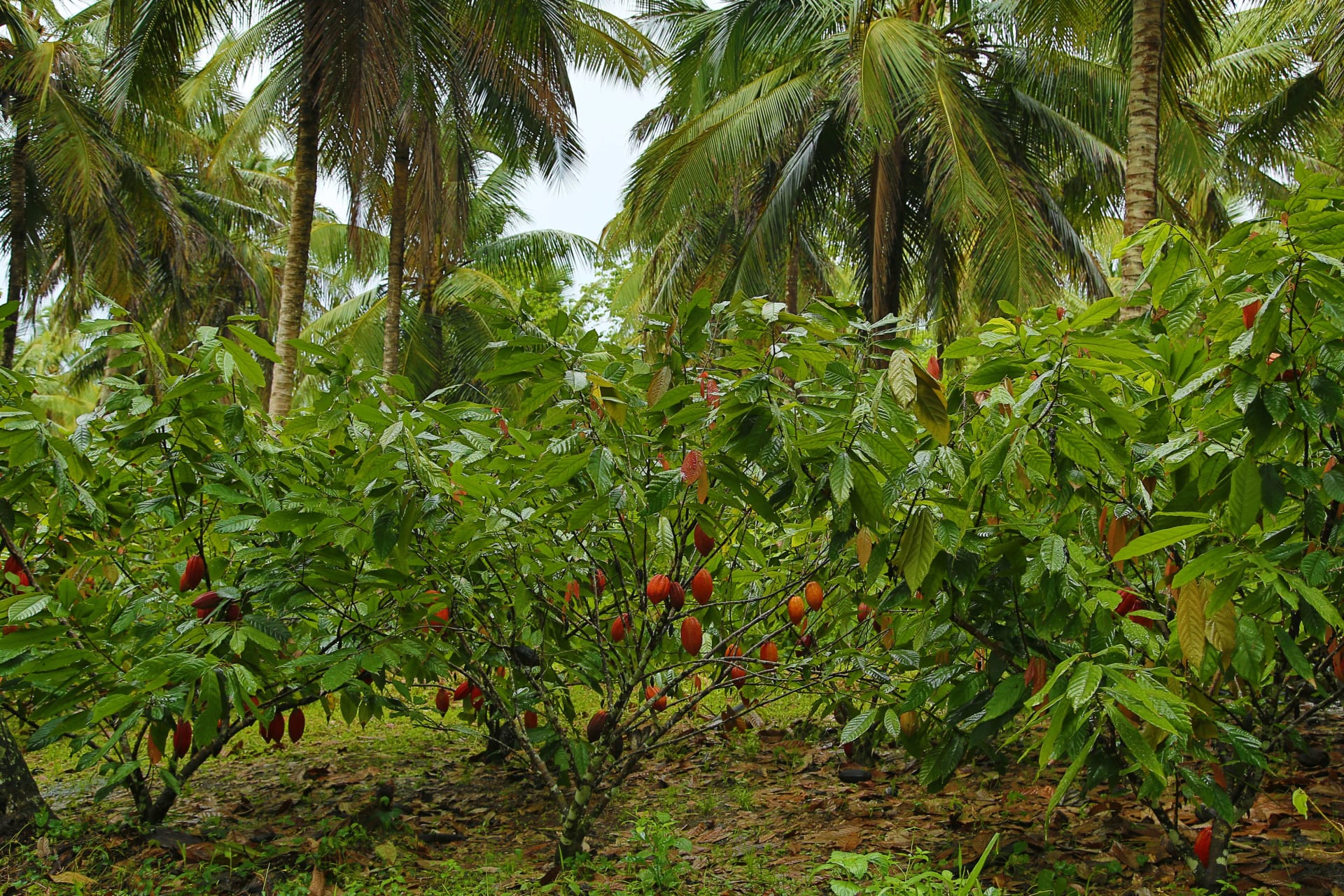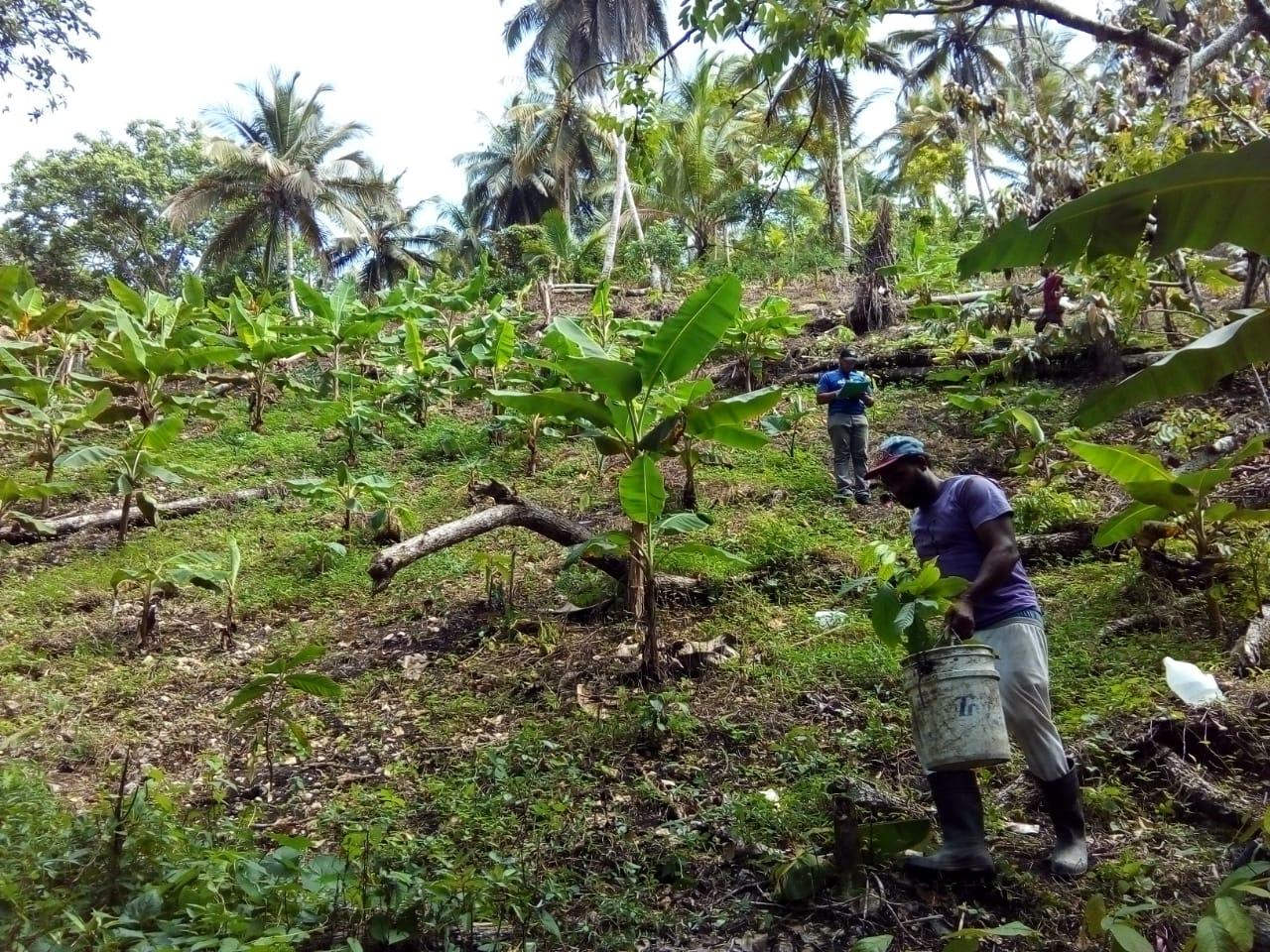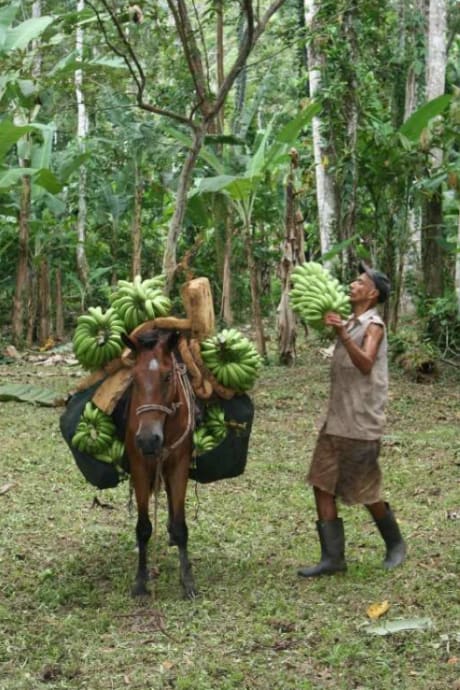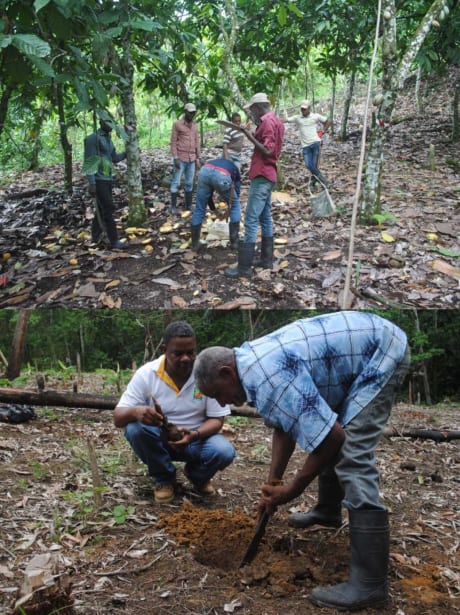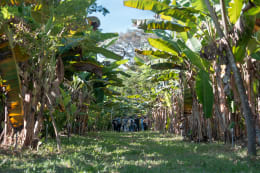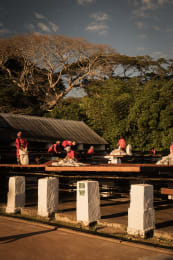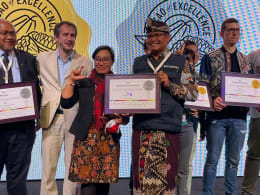Cacao Forest, a pioneering initiative revolutionizing cocoa farming
Cacao Forest is the fruit of a unique alliance between French chocolatiers (Valrhona, Ecotone, Weiss, Révillon, Voisin, Relais Desserts, and Carambar & co grouped within the TERRA ISARA endowment fund), research institutions (CIRAD) and higher education (ISARA), the NGO Earthworm Foundation, and the French Development Agency (AFD).
The initiative, implemented in 2016 in the Dominican Republic, the world's leading producer of organic cocoa, aimed to increase the income of producers and ensure the quality and sustainability of cocoa bean supplies through agroforestry
Innovating for sustainable agroforestry models in the Dominican Republic
Cacao Forest embarked on a successful collaboration with Dominican producers associated with three cooperatives (Conocado, Coproagro, Foundopo), in partnership with local institutions involved in the cocoa sector, both public (Ministries of Agriculture and Environment, IDIAF Research Center, UASD University) and private (National Cocoa Commission, ISA, UNEV, and PUCMM Universities, FUPAROCA Foundation). Together, they designed sustainable agroforestry models as alternatives to existing systems.
What is agroforestry
Agroforestry involves associating at least two plant species that meet 3 conditions: they are sufficiently close to interact, at least one of them is a woody plant (tree, palm, etc.), at least one of them is a plant cultivated for food purposes. Diversification, i.e., the number of species cultivated on the same plot, allows for generating complementary income for producers.
4 models were thus tested under real conditions in 3 sub-regions on 36 plots, covering an experimental area of 9 hectares. More than 1900 producers were impacted by the project.
Impacts of Agroforestry on Income and Biodiversity
Results show significant benefits, including :
- increased producer income (from 400 US$ par hectare per year to 1000 to 3000 US$ depending on the models)
- better management of biodiversity
- effective carbon sequestratio
- diversification of income sources for the farmers
More than 70 plants cultivated with cocoa have been identified in the Dominican Republic, leading to a selection and comparison process that targeted six high-value processed products based on bitter orange blossom, sapodilla, hibiscus flower, ginger, turmeric, and annatto.
Training at the Heart of the Project
During these 7 years, training for producers and technicians has been one of the program's pillars.
Soil fertility, cocoa tree grafting, family economy, transformation of products associated with cocoa, production of organic fertilizers, tree pruning to optimize yield: all these training sessions have improved cocoa farm performance and made cocoa cultivation more attractive to families and younger generations.
It's been a very good experience because we learn new things, and we learn how to deal with these associated products, how to use them to get better benefits.
José Nicolás Ortiz Delgado, Cooproagro Projet Manager
A short and applied training in agroforestry will soon be offered by Dominican universities (UNEV, ISA, UASD) to go further, perpetuate the transmission of knowledge, and attract future generations in the sectors.
Transformation at a Larger Scale and Sustainable Partnerships
The Cacao Forest project worked on constructing and validating its agroforestry models by continuously and closely collaborating with local actors in the cocoa sector.
PRACAO, a proposal for the national rehabilitation of cocoa plantations
One of the main results of Cacao Forest is an ambitious project to rehabilitate all Dominican cocoa plantations in 7 components, spread over 12 years and financed by a loan from the French cooperation (AFD) to the Dominican state.
The national agroforestry rehabilitation Program for Dominican cocoa plantations (PRACAO) was developed with the 12 local partners of Cacao Forest. It is now under the umbrella of the Dominican state budget and is due to be officially launched in 2024.
This new project will enable the rehabilitation of cocoa plantations across the country based on the agroforestry models developed by Cacao Forest, with continuous improvement and the production of solid scientific evidence, all while improving the economic resilience of families.
Sébastian Cardenas, Cacao Forest Project Coordinator for Earthworm Foundation.
Lessons Learned and Calls to Action
Cacao Forest highlights the relevance of a holistic multisectoral approach to strengthen cocoa sector resilience and ensure responsible supply, both socially, economically, and environmentally.
The project has paved the way for a new era of sustainability in the cocoa sector. These promising results call for further investments in research and development of sustainable agricultural systems for rural communities and farmed ecosystems.
Committed to sustainable cocoa farming, we are proud to have contributed to the Cacao Forest program in the Dominican Republic, thus proving that cocoa agroforestry is a sustainable alternative to intensive cultivation.
The Cacao Forest program continues and will be deployed in Ivory Coast in 2024.
